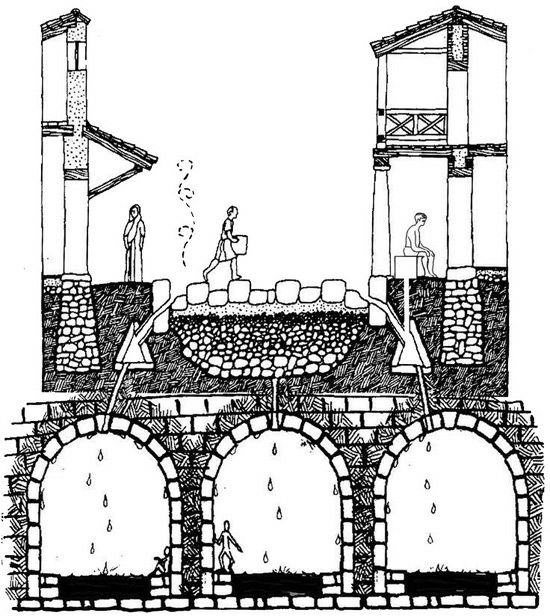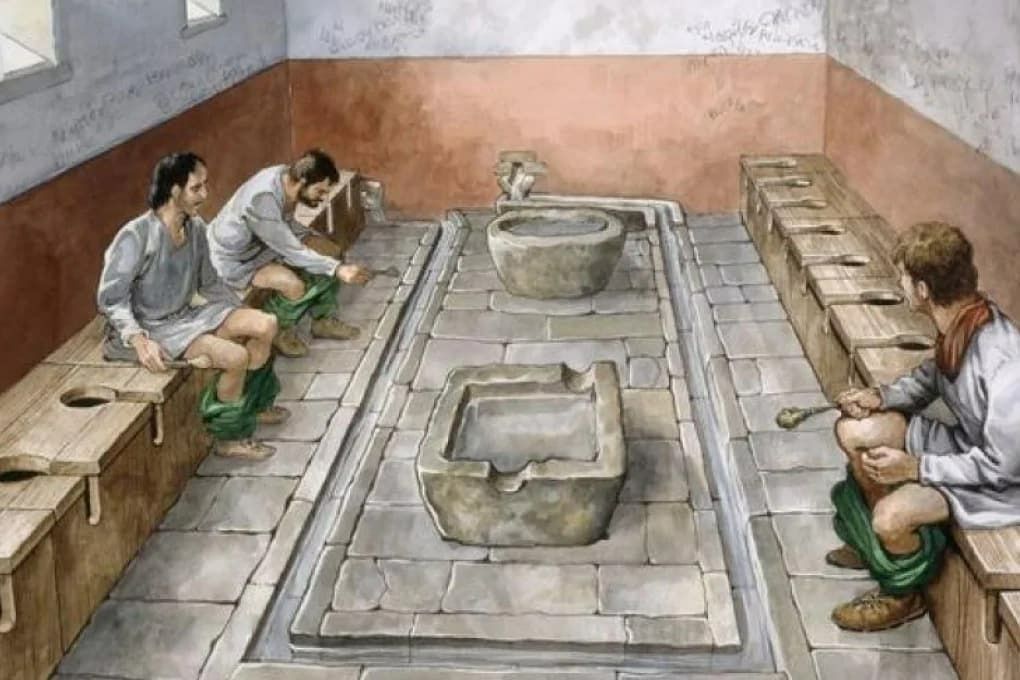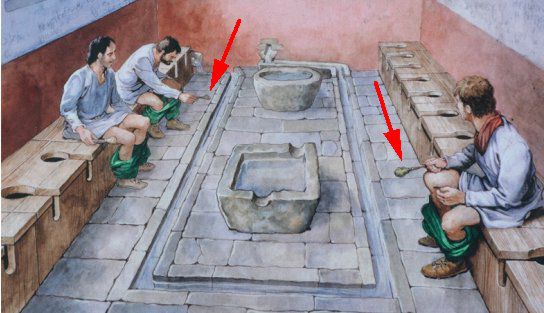Ancient Rome’s Public Toilets
The Romans, an ancient civilization known for its impressive engineering, art and architecture, had a unique way of keeping clean after using the restroom. They have two main methods, one of which involves an instrument called a tersorium. This device is specially designed to clean the buttocks after defecation. It was made of a fresh sponge, which was attached to a wooden stick, similar to the back pads sold in pharmacies today.
To use the tersorium, a person would first use a stick to aim and then use a sponge to wipe. After using the sponge, they would dip it in a bucket full of water or vinegar to clean for the next user. While water alone won’t be effective at disinfecting by modern standards, vinegar is known to be much more effective at keeping sponges clean and hygienic.
However, not everyone can afford a luxury tersorium, and in those cases, everyone has to turn to a readily available and free alternative: discarded pottery. Most of the common vessels, including the double-strap used to hold wine or oil, as well as the small lamps, are made of clay. As a result, the Greco-Roman landfills were filled with shards of pottery, also known as pessoi in Greek, which could have been used as a substitute for a tersorium.
Despite rather rudimentary cleaning methods, the Romans were able to maintain a certain level of cleanliness. They are resourceful people, making the most of what they have available. Today, we can look back on their methods with a mixture of fascination and gratitude for the advancements in hygiene we have at our disposal. However, it is important to remember that not everyone in the world has access to these modern conveniences, and we should appreciate and be grateful for the simple things we often take for granted.
Hits: 1









